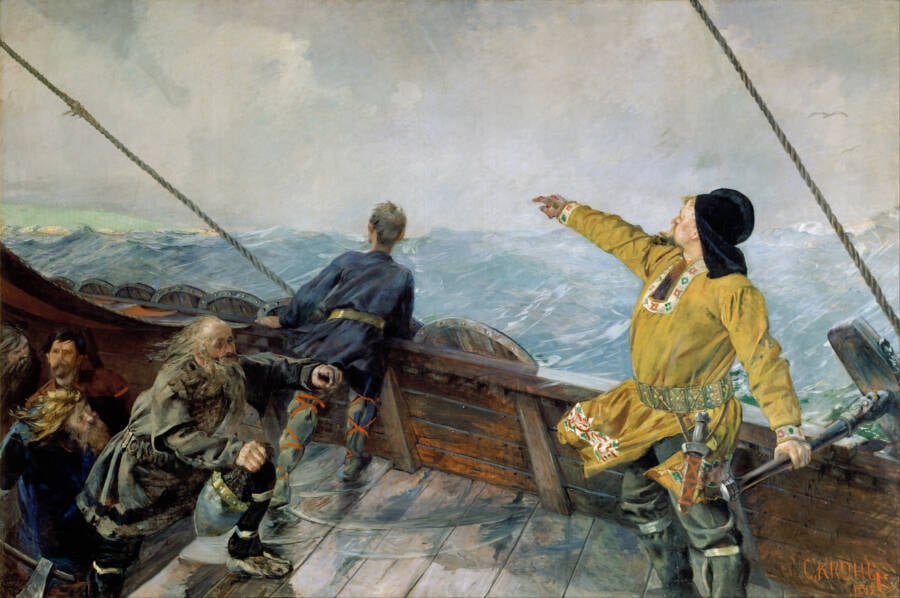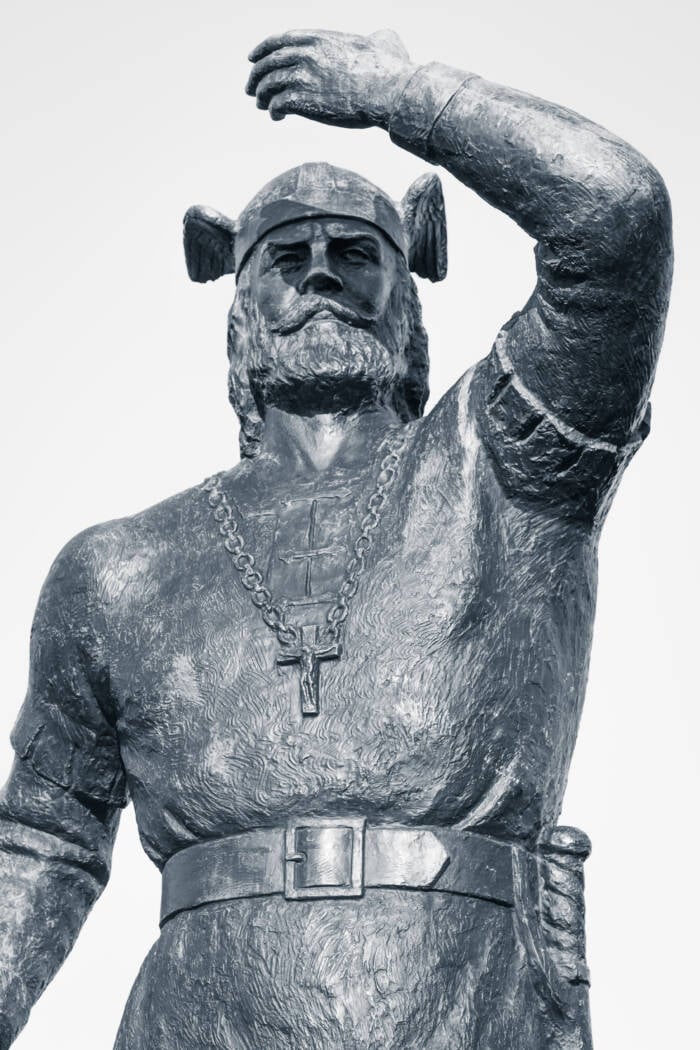Leif Erikson, The Famous Viking Who Explored The New World

Public DomainLeif Erikson Discovering America by Christian Krohg (1893).
Leif Erikson was a Norse explorer from Iceland, born around 970-980 C.E., who is widely believed to be the first European to set foot in North America — approximately 500 years before Christopher Columbus. Nicknamed “Leif the Lucky,” he was the son of Erik the Red, the famous explorer who established the first Viking colony in Greenland after being banished from Iceland for murder.
Around 1000 C.E., Erikson established a settlement called Vinland in what is believed to be present-day Newfoundland. According to The Saga of the Greenlanders, Erikson heard about an unexplored continent from an Icelandic trader named Bjarni Herjólfsson, who had stumbled upon it a decade earlier. Erikson bought Herjólfsson’s ship, organized a 35-person crew, and successfully retraced the trader’s route across the Atlantic.
During his journey, Erikson’s crew encountered several lands: Helluland (“Stone-slab Land”), likely Baffin Island or Labrador; Markland (“Forest Land”), probably Labrador; and finally Vinland (“Wine Land”), where they found timber and grapes. The Vikings reportedly spent an entire winter there, enjoying the weather and feasting on salmon and grapes, before returning to Greenland with their cargo.

Wikimedia CommonsA sculpture of Leif Erikson.
The strongest evidence supporting these accounts came in the 1960s when Norwegian explorer Helge Ingstad and his team discovered archaeological remains of a Norse settlement at L’Anse aux Meadows in Newfoundland. The site included eight buildings and 144 skeletons, and it matched the descriptions of Vinland from the sagas.
Despite this evidence, Columbus has remained more prominent in mainstream history, partly because Columbus inspired more European migration to the Americas. Still, Leif Erikson Day was made a national day of observance in 1964 and is celebrated on October 9.





